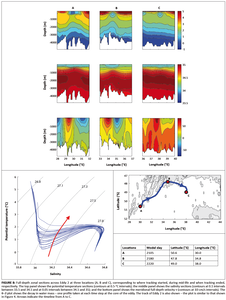OceanRep
Decay of eddies at the South-West Indian Ridge.
Durgadoo, Jonathan  , Ansorge, Isabelle J., De Cuevas, Beverly A., Lutjeharms, Johann R. E. and Coward, Andrew C.
(2011)
Decay of eddies at the South-West Indian Ridge.
, Ansorge, Isabelle J., De Cuevas, Beverly A., Lutjeharms, Johann R. E. and Coward, Andrew C.
(2011)
Decay of eddies at the South-West Indian Ridge.
![]() South African Journal of Science, 107
(11/12).
DOI 10.4102/sajs.v107i11/12.673.
South African Journal of Science, 107
(11/12).
DOI 10.4102/sajs.v107i11/12.673.
Preview |
Text
849.pdf - Published Version Available under License Creative Commons Attribution Non-commercial No Derivatives. Download (1MB) |
Preview |
Image
673-7042-1-SP.PNG - Supplemental Material Available under License Creative Commons Attribution Non-commercial No Derivatives. Download (708B) |
Preview |
Image
673-7041-1-SP.PNG - Supplemental Material Available under License Creative Commons Attribution Non-commercial No Derivatives. Download (5kB) |
Preview |
Image
673-7043-1-SP.PNG - Supplemental Material Available under License Creative Commons Attribution Non-commercial No Derivatives. Download (535kB) |
![[thumbnail of 673-7050-1-SP.png]](https://oceanrep.geomar.de/13913/5.hassmallThumbnailVersion/673-7050-1-SP.png)  Preview |
Image
673-7050-1-SP.png - Supplemental Material Available under License Creative Commons Attribution Non-commercial No Derivatives. Download (301kB) |
Abstract
The South-West Indian Ridge in the Indian sector of the Southern Ocean is a region recognised for the creation of particularly intense eddy disturbances in the mean flow of the Antarctic Circumpolar Current. Eddies formed at this ridge have been extensively studied over the past decade using hydrographic, satellite, drifter and float data and it is hypothesised that they could provide a vehicle for localised meridional heat and salt exchange. The effectiveness of this process is dependent on the rate of decay of the eddies. However, in order to investigate eddy decay, logistically difficult hydrographic monitoring is required. This study presents the decay of cold eddies at the South-West Indian Ridge, using outputs from a high-resolution ocean model. The model’s representation of the dynamic nature of this region is fully characteristic of observations. On average, 3–4 intense and well-defined cold eddies are generated per year; these eddies have mean longevities of 5.0±2.2 months with average advection speeds of 5±2 km/day. Most simulated eddies reach their peak intensity within 1.5–2.5 months after genesis and have depths of 2000 m – 3000 m. Thereafter they dissipate within approximately 3 months. The decay of eddies is generally characterised by a decrease in their sea surface height signature, a weakening in their rotation rates and a modification in their temperature–salinity characteristics. Subantarctic top predators are suspected to forage preferentially along the edges of eddies. The process of eddy dissipation may thus influence their feeding behaviour.
| Document Type: | Article |
|---|---|
| Keywords: | Oceanography; eddies; South Africa; Ocean Circulation and Climate Advanced Modelling model |
| Research affiliation: | OceanRep > GEOMAR > FB1 Ocean Circulation and Climate Dynamics > FB1-TM Theory and Modeling |
| Refereed: | Yes |
| Open Access Journal?: | Yes |
| Publisher: | NOAA |
| Projects: | Future Ocean |
| Date Deposited: | 05 Mar 2012 10:41 |
| Last Modified: | 24 Jan 2019 09:37 |
| URI: | https://oceanrep.geomar.de/id/eprint/13913 |
Actions (login required)
 |
View Item |
Copyright 2023 | GEOMAR Helmholtz-Zentrum für Ozeanforschung Kiel | All rights reserved
Questions, comments and suggestions regarding the GEOMAR repository are welcomed
at bibliotheksleitung@geomar.de !


 Tools
Tools Tools
Tools
